From cut flower gardens to ornamental beds, there are so many unique landscape designs to try in your backyard. But if you’re looking to create something really special in your outdoor space, moon gardens are a unique and thrilling garden type to try.
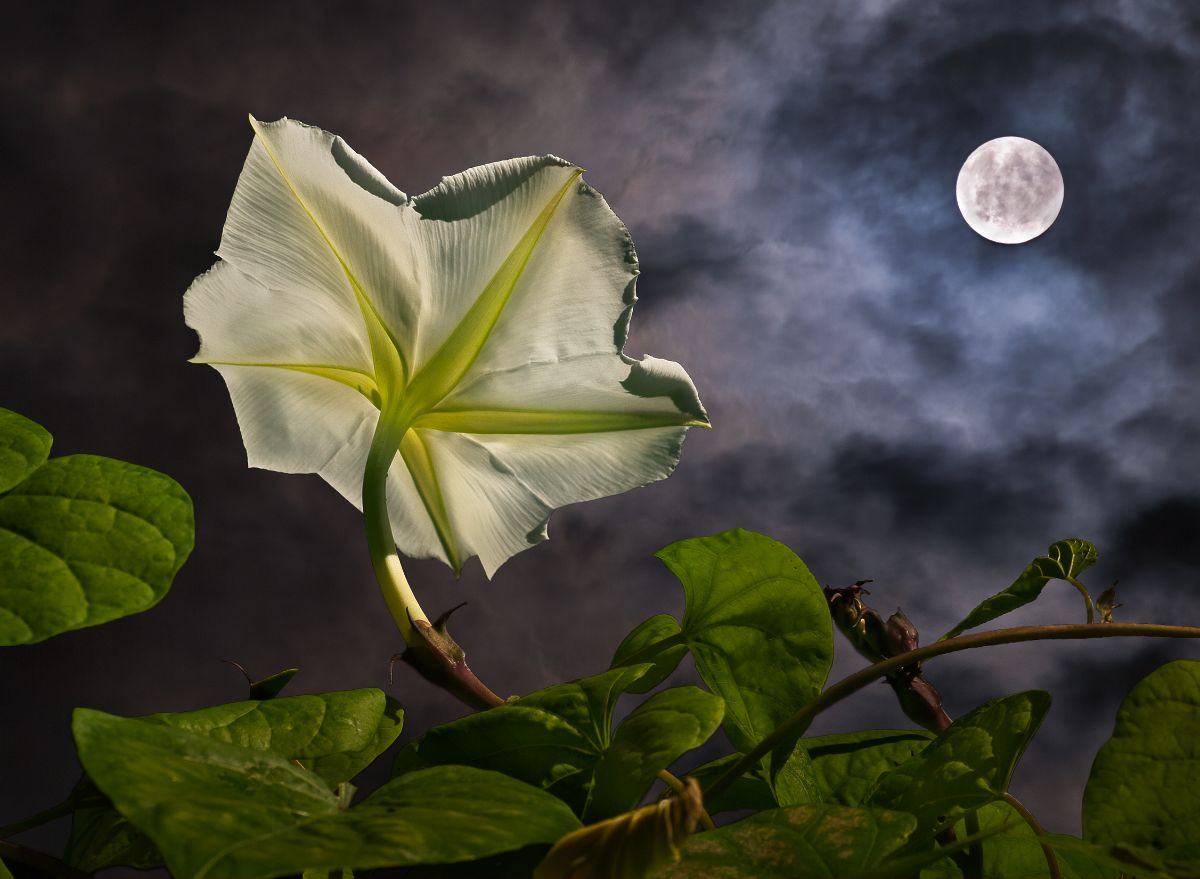
Specially designed and planted to take advantage of the moon’s light, moon gardens come alive after dark with bright white and silver leaves and flowers that are sure to delight. And, with many fragrant, night-blooming flowers, moon gardens aren’t just a treat for the eyes -- they can enchant your nose too!
In this article, we’ll explore some of the best white or silver plants to sow in your own moon garden. And, of course, we’ve thrown in some wonderfully scented, night-blooming flowers, too, to create a truly magical garden experience after dark.
Jump to:
- What is a moon garden?
- 20 Best Plants to Grow in a Moon Garden
- 1. Moonflower (Ipomoea alba)
- 2. Evening Primrose (Oenthera biennis)
- 3. Night Blooming Jasmine (Cestrum nocturnum)
- 4. Angel’s Trumpet (Brugmansiaspp.)
- 5. Gardenia (Gardenia jasminoides)
- 6. Flowering Tobacco (Nicotiana alata)
- 7. Dusty Miller (Jacobaea maritima)
- 8. Narcissus (Narcissus spp.)
- 9. ‘Silver Mound’ Artemisia (Artemisia schmidtiana)
- 10. Lavender (Lavandula angustifolia)
- 11. Casa Blanca Lily (Lilium 'Casa Blanca')
- 12. Magnolias(Magnolia stellata)
- 13. Bleeding Hearts (Dicentra spp.)
- 14. Peonies (Paeonia spp.)
- 15. Creeping Phlox (Phlox stolonifera)
- 16. Mock Orange (Philadelphus virginalis)
- 17. Hydrangea (Hydrangea petiolaris)
- 18. Hostas (Hosta spp.)
- 19. Lamb’s Ear (Stachys byzantine)
- 20. Foamflower (Tiarella cordifolia)
- Frequently asked questions
- Summary
What is a moon garden?
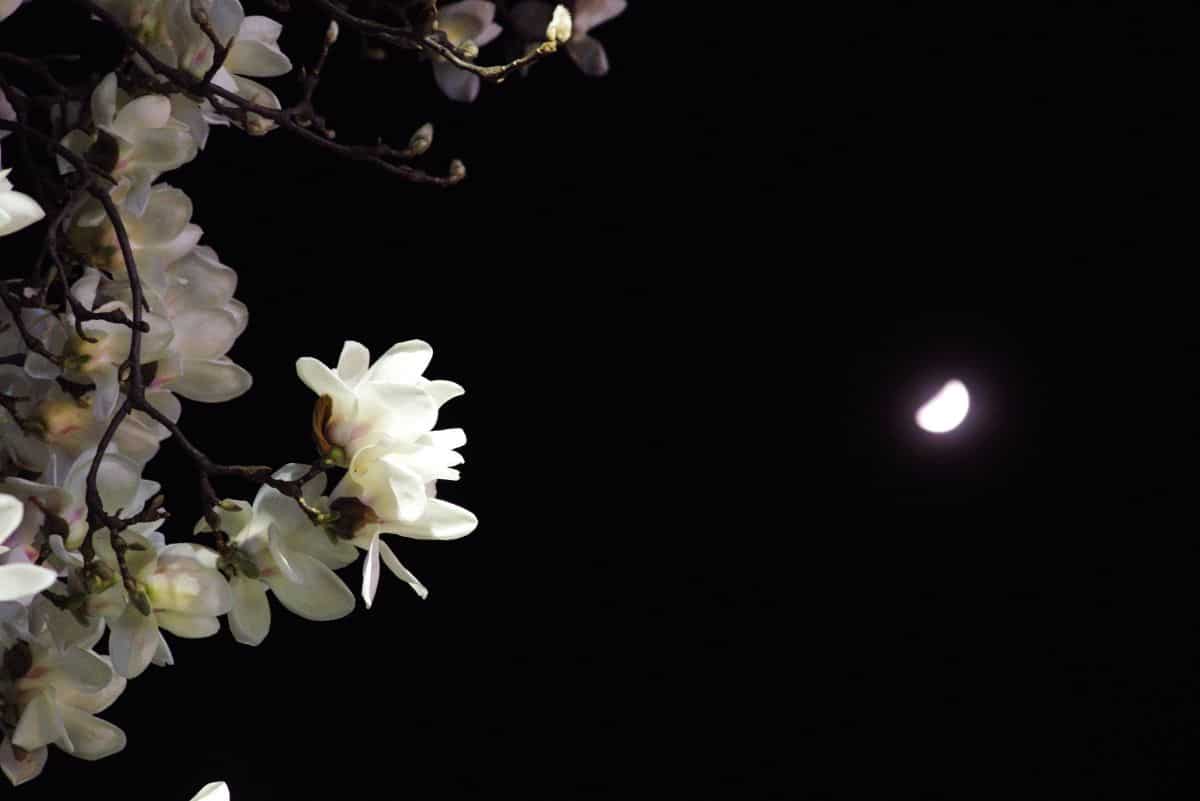
“Moon gardens” were first developed in ancient China as places for rest, relaxation, and meditation after the day’s travails. Designed specifically for nighttime enjoyment, these gardens were created to look and feel their best after dark. By combining plants with light-colored foliage, night-blooming flowers, and brightly toned hardscapes, moon gardens really come to life when gently illumined by the light of the moon.
Plants best suited for moon garden designs include plants with variegated leaves or light green to silver foliage. Adding in some fragrant, night-blooming flowers can maximize the utility of the space, making it a joy to experience with both your eyes and nose. Even well after dark, the sweet floral scent from your moon garden can lend a tropical and exotic feel to your landscape design.
Some gardeners may choose to add a few solar lights to their moon garden to accentuate flowers after dark. However, for even better results, locating your moon garden bed in an open spot in your backyard that receives ample moonlight will ensure plants show to their fullest without any electricity.
Adding a small water feature can also help to create a relaxing environment that will make your moon garden feel like even more of an oasis after a hard day’s work.
20 Best Plants to Grow in a Moon Garden

While most night-blooming, fragrant ornamentals with bright leaves and flowers will work well in a moon garden, below are some of the top plants to really make your garden design stand out. These plants offer big, bold flowers and lots of visual impacts and will look even better when clustered together.
Planting Tip: Keep in mind that a single flower in a moon garden may be difficult to spot, but a garden bed planted with lots of white flowers or silver-toned leaves will be much easier to see after dark.
1. Moonflower (Ipomoea alba)

| Plant name: | Moonflower |
| Daytime lighting requirements: | Full sun |
| Watering requirements: | Moderate to low |
| Growing zone: | Zones 10 to 12, kept as an annual in cooler locations |
| Additional growing information: | Grows best with supportive structures, like trellises; naturally deer resistant and drought tolerant. |
Closely related to the common morning glory, moonflowers are similarly vining plants that grow as perennials to zone 10. In cooler spots, they can be kept as annuals, which may be for the best as they can become invasive in more tropical climates. If you live in a warm location, be sure to deadhead spent blooms to keep them from seeding themselves.
In the moon garden, moonflowers provide a nice pop of color thanks to their bright, white trumpet-shaped flowers. Plants can be grown on trellising or garden stakes, or they can be allowed to twine up naturally over sturdier plants if you like that look. Flowers unfurl in the afternoon and last only through the night, but they emit a pleasant, lemony scent.
2. Evening Primrose (Oenthera biennis)
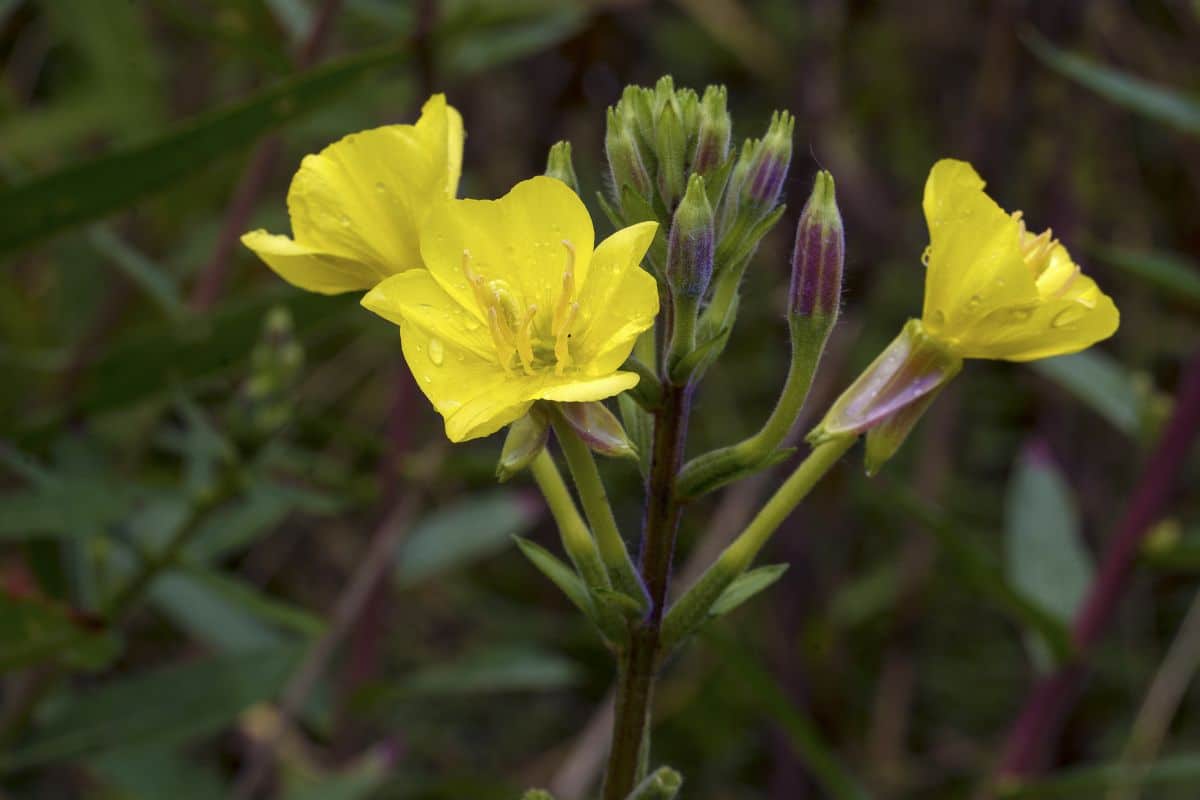
| Plant name: | Evening Primrose |
| Daytime lighting requirements: | Full sun |
| Watering requirements: | Low |
| Growing zone: | Zones 3 to 11 |
| Additional growing information: | While yellow flowers are typical, primrose also comes in pink and white. |
A native biennial wildflower, if you plant evening primrose in your garden, expect it to come back the following year. However, after that, it may need to be replanted unless it self-seeds. An easygoing plant, evening primrose is quite drought-tolerant and prefers well-draining soil.
Evening primrose is a long-season bloomer and will flower throughout summer and well into fall, even in cooler areas. As the name suggests, flowers open in the evening and are a special treat for pollinators, like hummingbirds, as well as hawkmoths and other nocturnal species. When mature, plants will grow to about 2’ in height and have slightly hairy leaves and delicately scented yellow flowers.
3. Night Blooming Jasmine (Cestrum nocturnum)
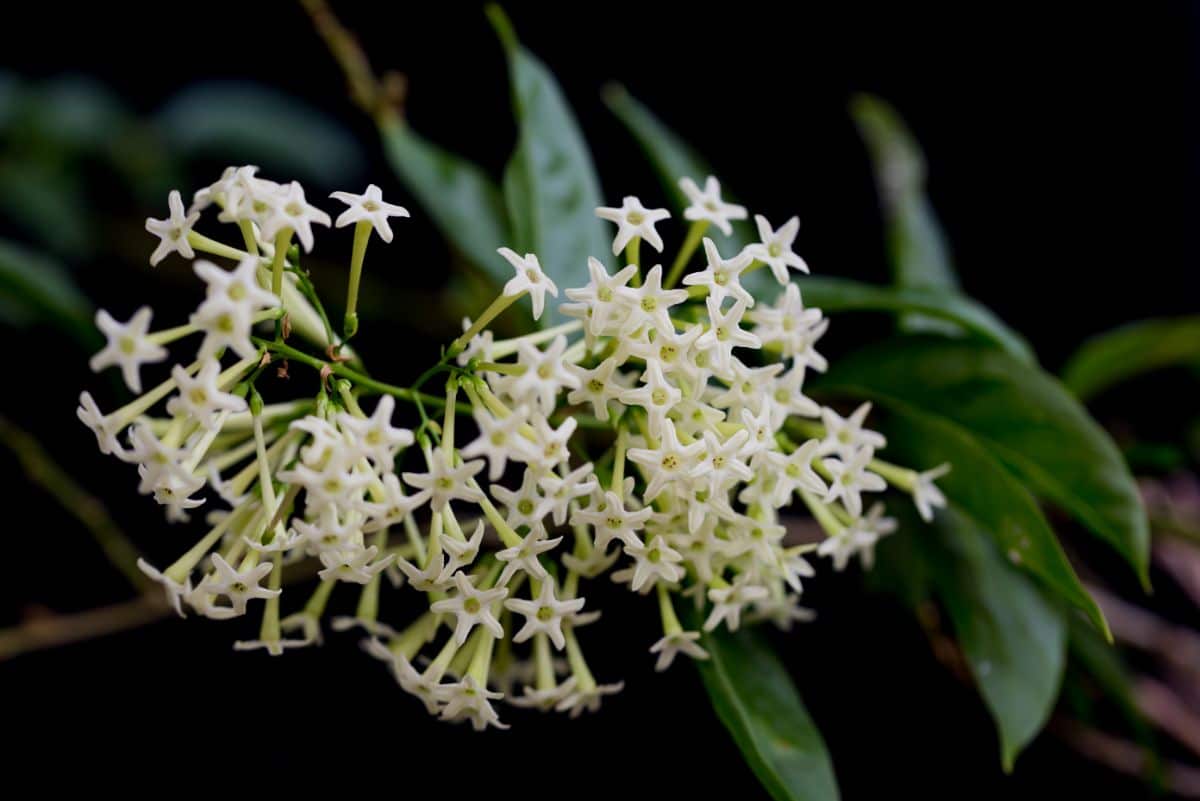
| Plant name: | Night Blooming Jasmine |
| Daytime lighting requirements: | Full sun to part shade |
| Watering requirements: | High |
| Growing zone: | Zones 8 to 11 |
| Additional growing information: | For better growth, fertilize every couple of weeks throughout the summer. |
A strongly scented plant with yellow, white, pink, or green flowers, night-blooming jasmine’s fragrance can easily spread several hundred feet around the plant. That makes this a very fine choice for scent gardens and moon gardens alike, and it’s a special treat to smell its sweet, floral fragrance in the evening air. Once flowers fade, the plant may also produce colorful berries in red, purple, or white.
As a broad-leaf evergreen shrub, night-blooming jasmine can grow up to 10’ tall, but it can be kept smaller with frequent pruning. This is a plant that doesn’t tolerate cold, though, so it is not appropriate for cooler locations. Additionally, it does prefer moist soil, so be sure to water it regularly.
4. Angel’s Trumpet (Brugmansiaspp.)
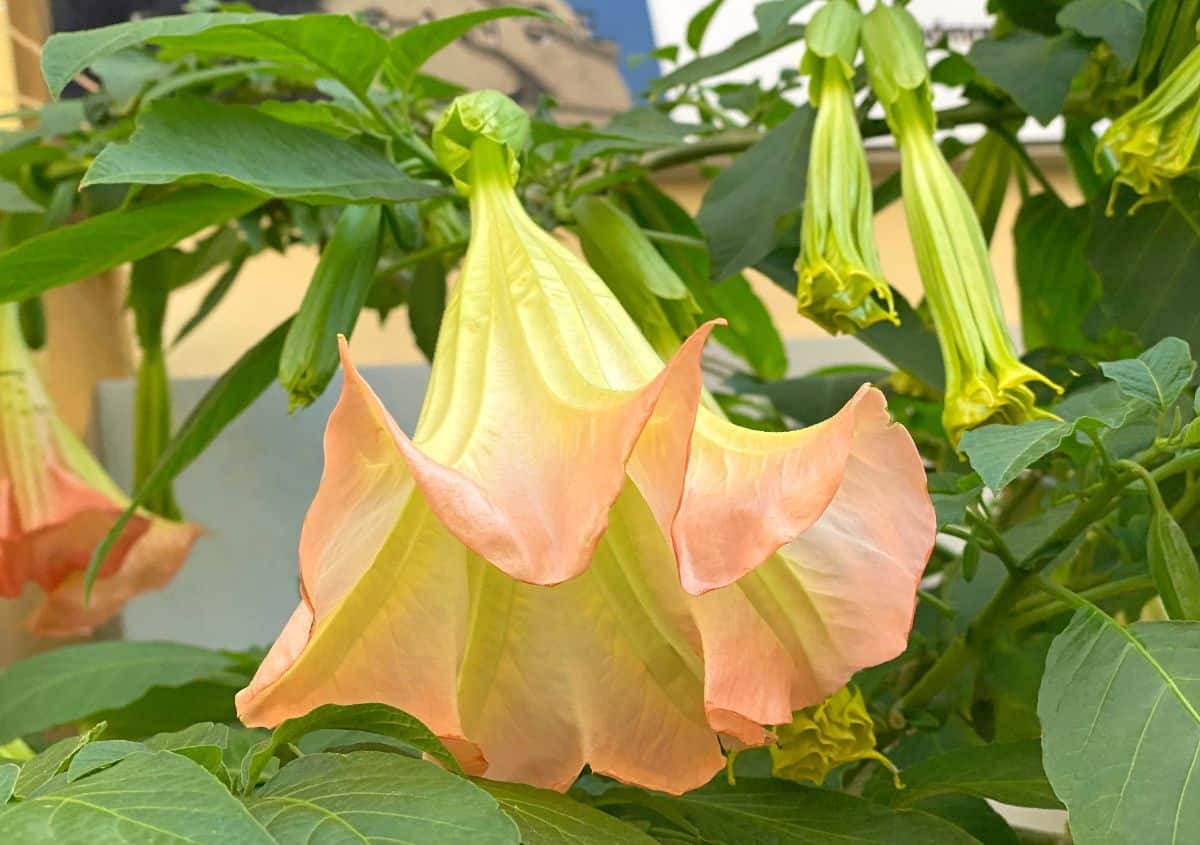
| Plant name: | Angel’s Trumpet |
| Daytime lighting requirements: | Part shade |
| Watering requirements: | High |
| Growing zone: | Zones 9 to 11 |
| Additional growing information: | Fall pruning can encourage more growth; plant prefers water that has been left out overnight to water fresh from the tap. |
Angel’s trumpet is a stunning plant that is a real showstopper in the garden. This small tree or shrub grows up to 15’ tall and produces large and showy tubular flowers in pinks, yellows, apricot, and white. Flowers produce a strong fragrance, which can range from floral to citrus or musky tones, depending on the cultivar.
A warm weather-loving plant, angel’s trumpet only grows as a perennial down to zone 8, and it doesn’t tolerate frost well. That said, this plant can also be overwintered indoors as a houseplant. However, it is toxic if ingested, so it is not recommended to keep it indoors if you have small children or pets.
5. Gardenia (Gardenia jasminoides)
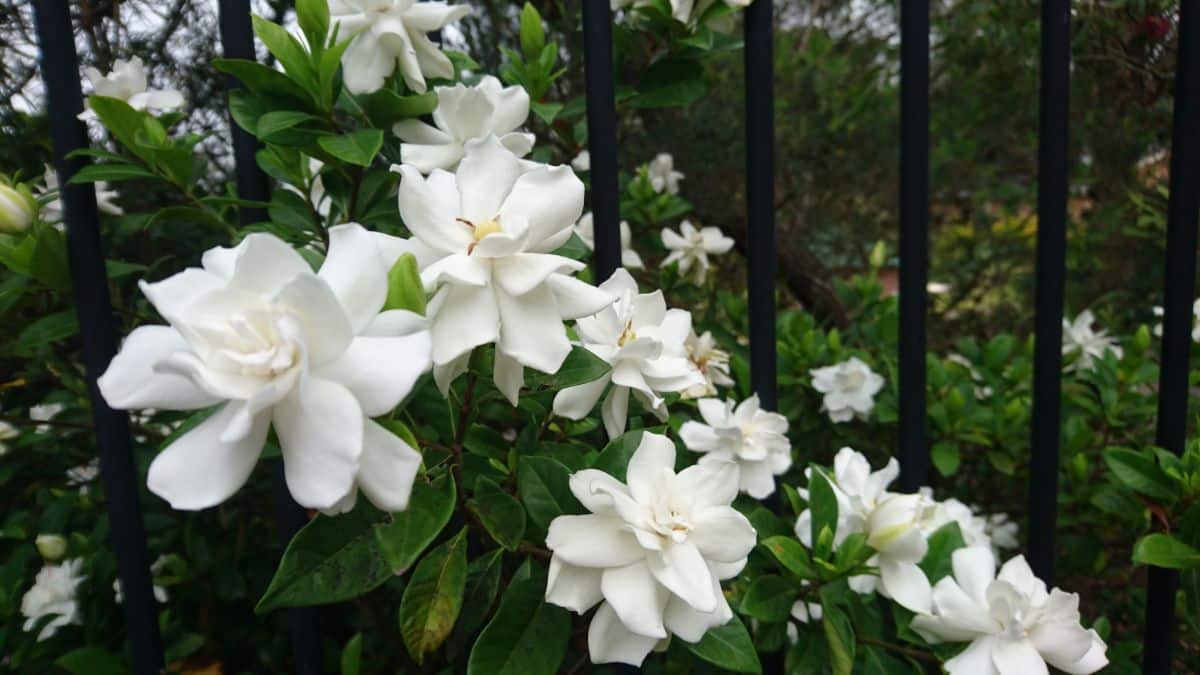
| Plant name: | Gardenia |
| Daytime lighting requirements: | Full sun to part shade |
| Watering requirements: | Moderate |
| Growing zone: | Zones 7 to 11 |
| Additional growing information: | Frequently used in corsages and bouquets, gardenias are top picks for moon gardens and make excellent houseplants too. |
Another fragrant night-blooming flower, gardenia blooms open in the evening and offer a sweet, jasmine-like fragrance. This evergreen shrub grows between 3 and 6’ tall and can be pruned to produce fun garden shapes or allowed to grow as is. Gardenias prefer warmer weather and are only hardy down to zone 7, but they are often overwintered as houseplants in colder regions.
Gardenia blooms can come in different colors, but white and cream are the most common. These plants also prefer acidic soil and frequent fertilizing throughout the growing season to keep them looking their best. Deadheading spent blooms can help your plants produce more flowers too.
6. Flowering Tobacco (Nicotiana alata)
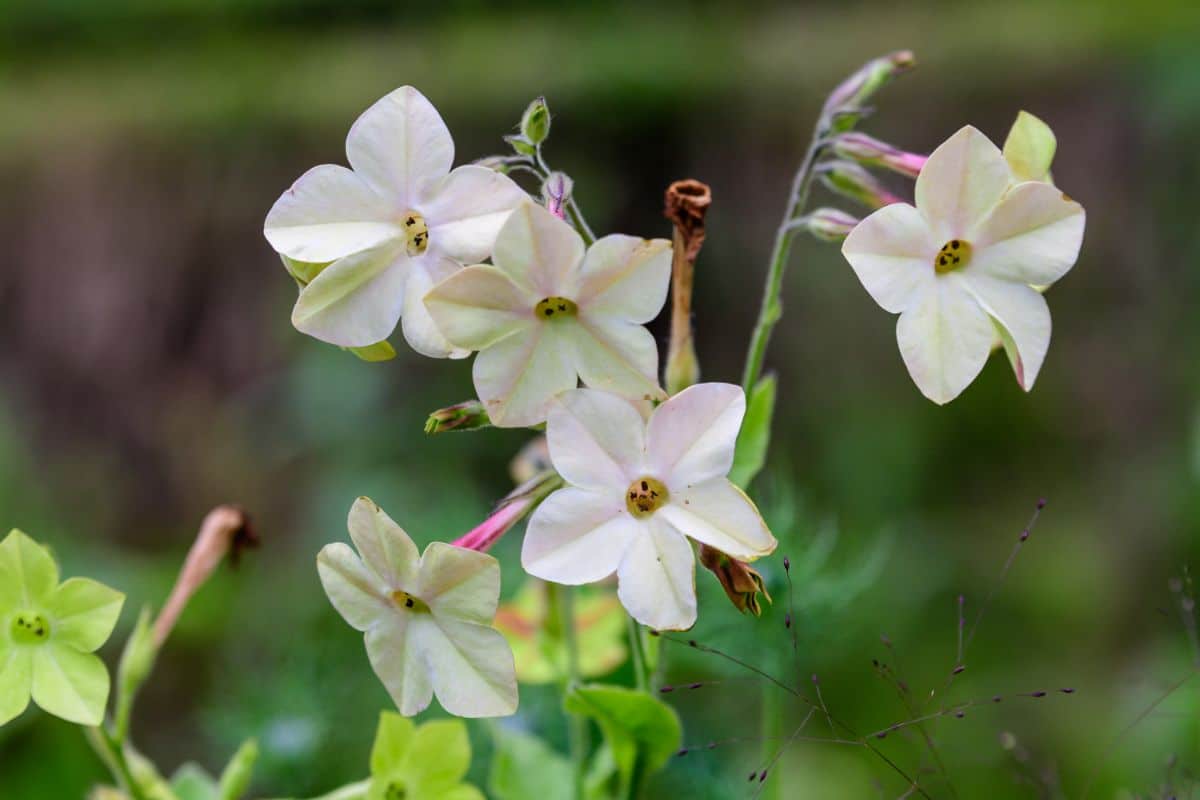
| Plant name: | Flowering Tobacco |
| Daytime lighting requirements: | Full sun to part shade |
| Watering requirements: | High |
| Growing zone: | Zones 10 to 11, kept as an annual in cooler locations |
| Additional growing information: | Space plants at least 1 to 3’ apart to prevent issues like mildew. |
Primarily grown as an ornamental, flowering tobacco is not recommended for smoking, but it does have tons of other benefits. Colorful, tubular flowers come in a range of colors, including pink, red and purple, and emit a sweet, floral fragrance that is similar to jasmine. To take full advantage of this plant in your moon garden, try placing it near a window or back doorway and allow the aroma to fill your home when your windows are open.
A favorite plant among pollinators, flowering tobacco is easy to start from seed and grows as a short-lived perennial in zones 10 and 11. If you live in a colder area, try starting your seeds indoors in early spring. When it’s time to transplant outside, make sure you allow for adequate spacing between plants to prevent issues caused by overcrowding.
7. Dusty Miller (Jacobaea maritima)

| Plant name: | Dusty Miller |
| Daytime lighting requirements: | Full sun to part shade |
| Watering requirements: | Moderate |
| Growing zone: | Zones 8 to 10, kept as an annual in cooler locations |
| Additional growing information: | Planting your plants in brighter spots in your garden will encourage more silvery tones in your plant’s leaves. |
Dusty miller is one of the top foliage plants for moon gardens for a good reason. This plant’s silvery foliage shows well after dark and makes a lovely complement for night-blooming flowers. Dusty miller also grows quite compactly (staying under 2’ high), so it is a good choice for container beds and small spaces too.
A tender perennial, dusty miller, is only hardy to zone 8 and is grown as an annual in cooler spots. This plant is native to the Mediterranean region and belongs to the Aster family. For best results, sow your dusty miller in slightly acidic soil and full sun.
8. Narcissus (Narcissus spp.)
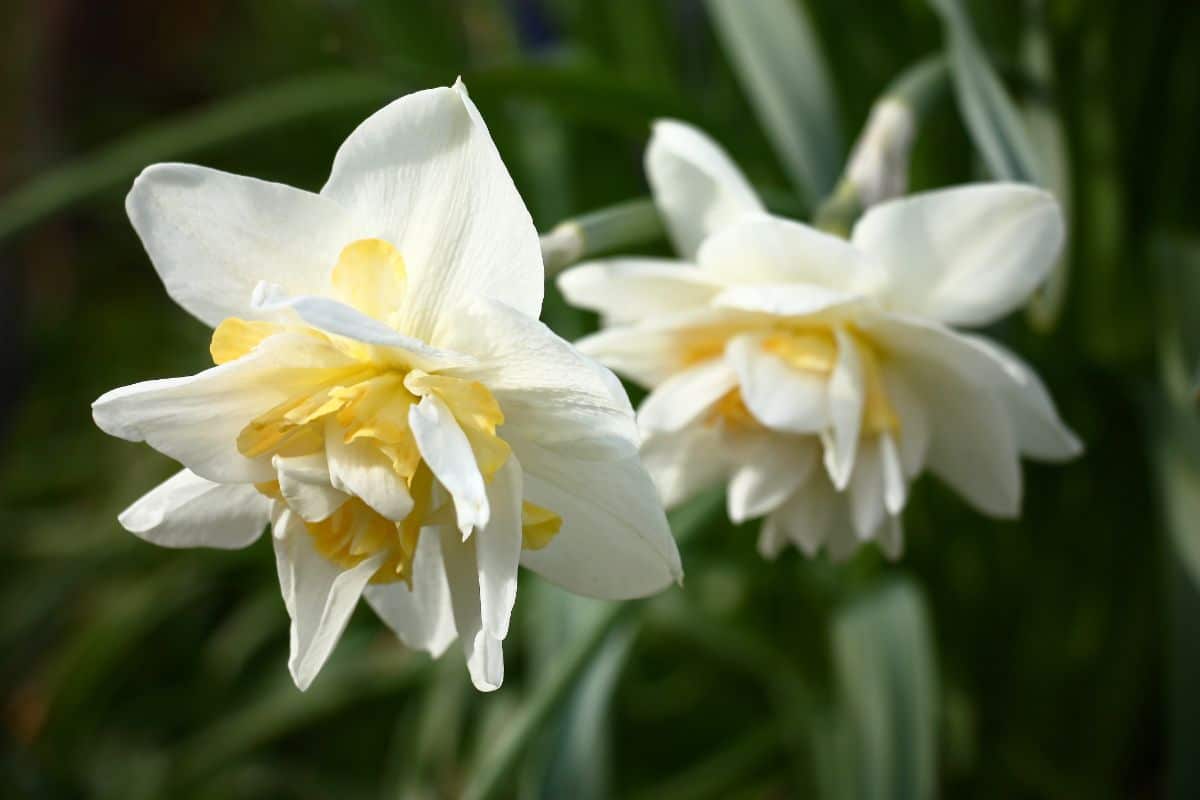
| Plant name: | Narcissus |
| Daytime lighting requirements: | Full sun to part shade, depending on the variety |
| Watering requirements: | Moderate |
| Growing zone: | Zones 3 to 8 |
| Additional growing information: | Unlike many other bulb varieties, narcissus bulbs are naturally repulsive to many pests, including rodents. |
Daffodils are one of the most popular spring-blooming bulbs, and white daffodils (Narcissus spp.) are particularly well-suited for moon gardens. With a sweet and delicate fragrance, these beauties offer delight for all the senses, and they show beautifully by the light of the moon. Narcissus flowers also make wonderful cut flowers for springtime bouquets and arrangements.
For happier plants, narcissus bulbs should be planted in the fall, generally from September to November, depending on your growing location. While bulbs can be planted singly throughout your yard for a more naturalistic look, try planting narcissus bulbs together in drifts, which will help them to show better after dark.
9. ‘Silver Mound’ Artemisia (Artemisia schmidtiana)
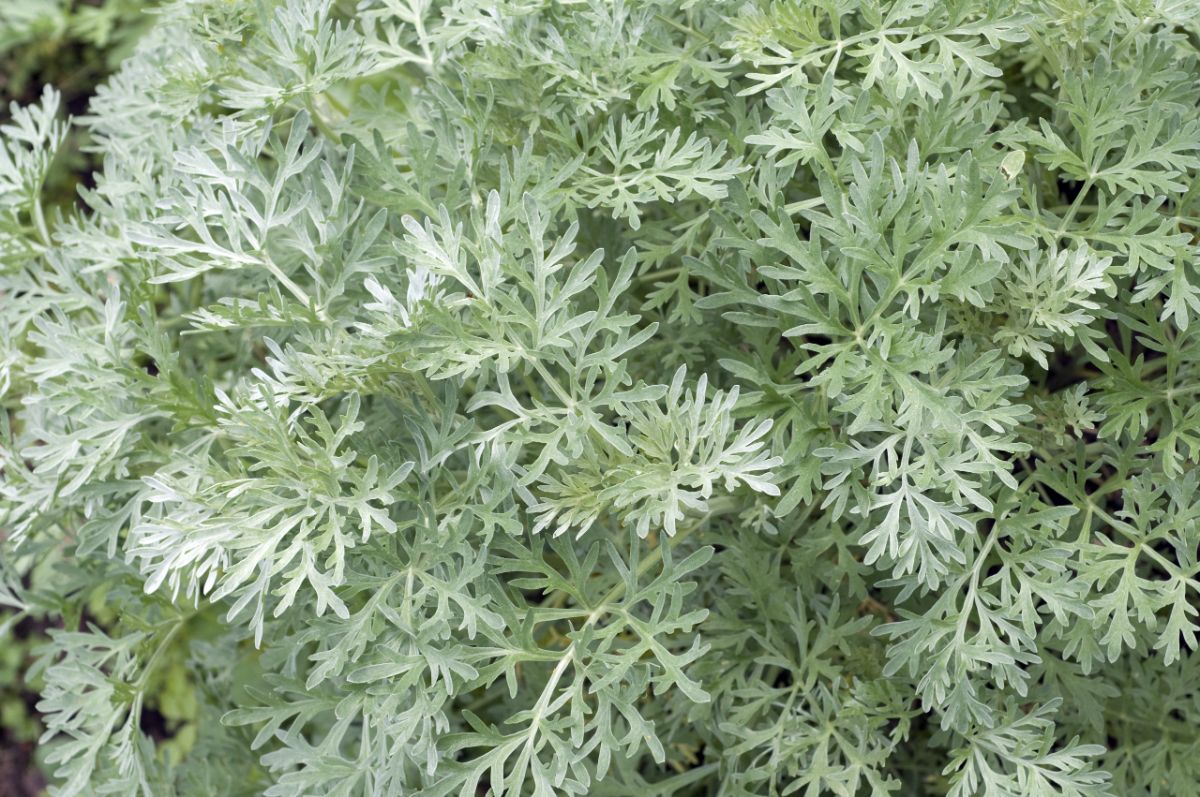
| Plant name: | ‘Silver Mound’ Artemisia |
| Daytime lighting requirements: | Full sun |
| Watering requirements: | Low |
| Growing zone: | Zones 4 to 8 |
| Additional growing information: | Thanks to its strong fragrance, this plant is naturally deer and rabbit-resistant. |
A type of wormwood, ‘Silver Mound,’ has been specifically cultivated for its gorgeous, feathery, and silvery-toned leaves. This plant grows in tight mounds and can be used as a pretty accent plant or low-maintenance groundcover, depending on your landscape design. Foliage provides a wonderful, herbal smell when crushed and can be dried for homemade potpourris too.
Although ‘Silver Mound’ artemisia does bloom small, yellow flowers in summer, this plant is primarily kept for its foliage. Well-suited for inground beds and planters, too, try pairing ‘Silver Mound’ with lavender in your moon garden. The plants’ silver-toned leaves and rich fragrances will complement each other.
10. Lavender (Lavandula angustifolia)
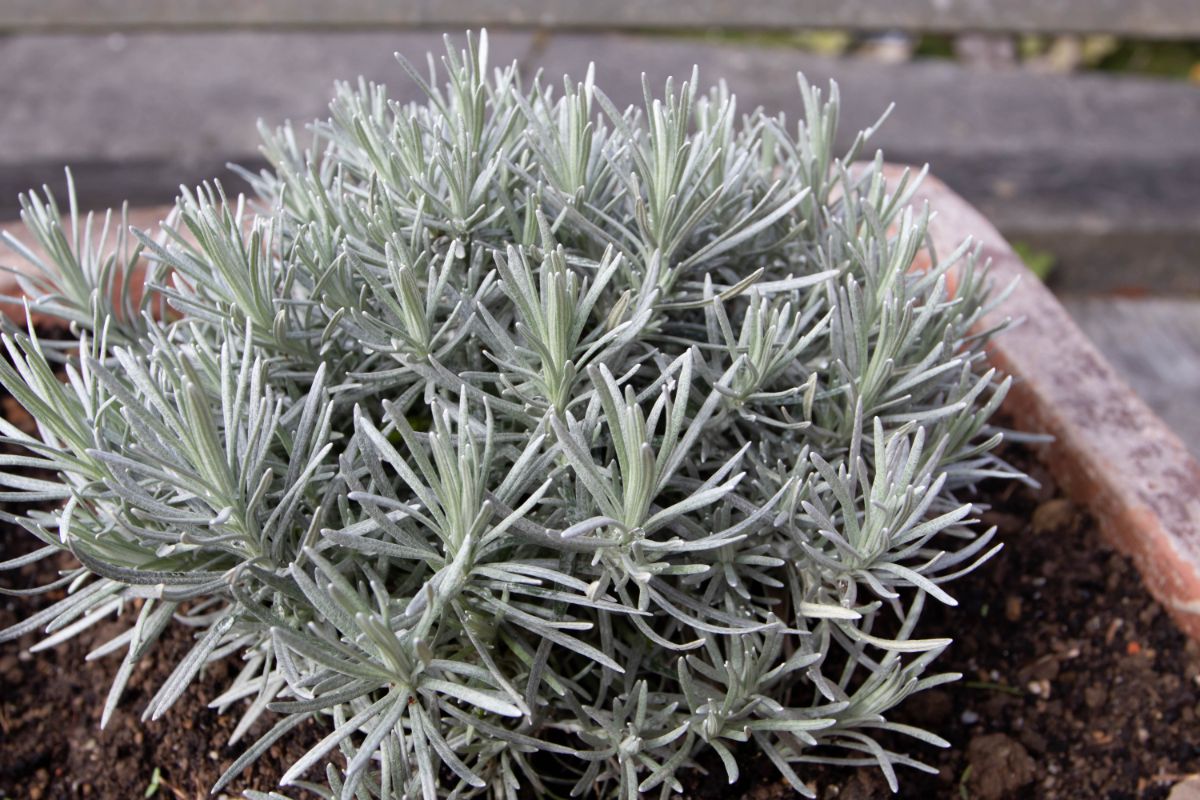
| Plant name: | Lavender |
| Daytime lighting requirements: | Full sun |
| Watering requirements: | Low |
| Growing zone: | Zones 5 to 9, depending on the variety |
| Additional growing information: | Different lavender varieties are preferred for different growing locations, so be sure to pick the right type for your area. |
There are just so many reasons to grow lavender at home. It’s a low-maintenance plant, and pollinators love its sweet, purple flowers. Lavender’s rich fragrance is sure to elevate any garden, day or night, and some varieties are even edible and make delightful additions to desserts and homemade syrups.
Native to the Mediterranean, lavender does best in slightly sandy soil and drier conditions. It also doesn’t need a lot of fertilizer and is naturally resistant to most pests. Just be advised that if you live in a more humid location, you’ll have better results if you opt for a lavender variety (like Lavandula canariensis) that doesn’t mind a bit of extra humidity.
11. Casa Blanca Lily (Lilium 'Casa Blanca')
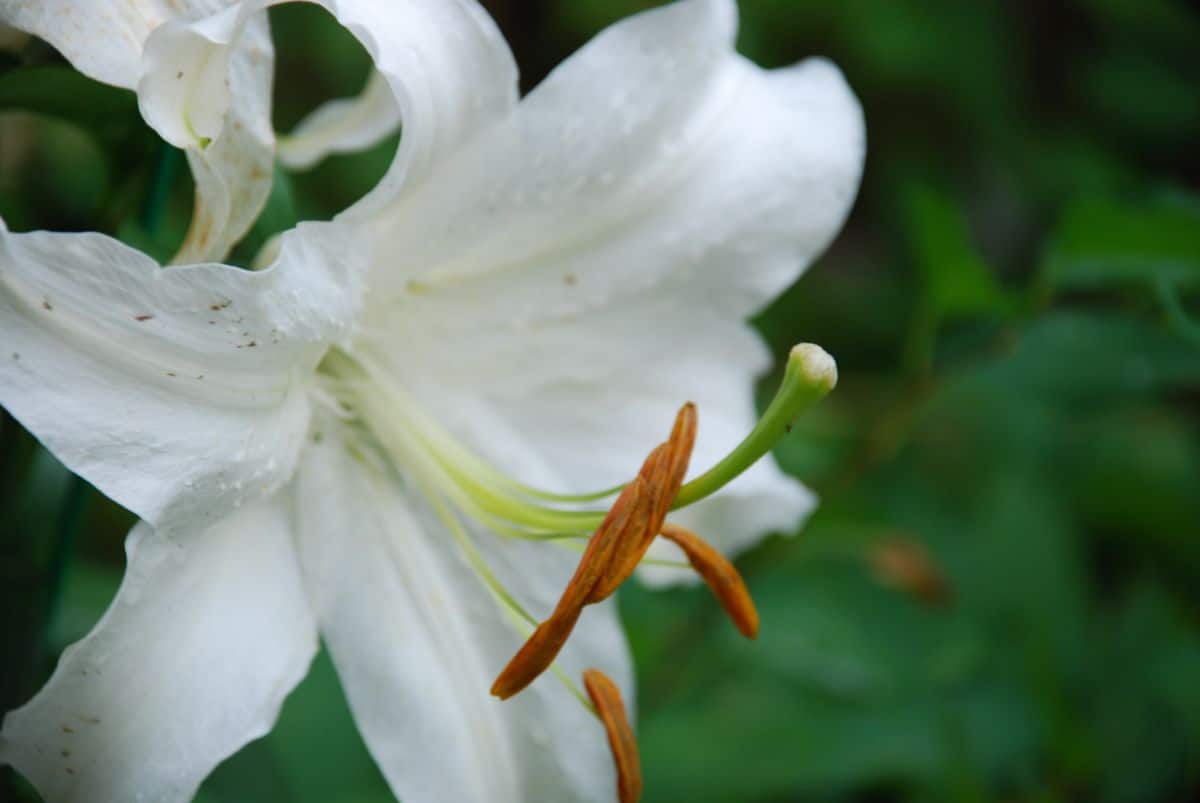
| Plant name: | Casa Blanca Lily |
| Daytime lighting requirements: | Full sun to part shade |
| Watering requirements: | Moderate to high |
| Growing zone: | Zones 5 to 8 |
| Additional growing information: | Keep a lookout for common issues, including lily mosaic virus, aphids, and lily leaf beetles. |
A popular plant in cut flower gardens, ‘Casa Blanca' lily is also a prime plant to keep in moon gardens thanks to its lovely fragrance. Large white blooms appear nightly in June and July and should be deadheaded once the blooms fade.
Grown from perennial bulbs, ‘Casa Blanca’ lilies should be planted in autumn and mulched, if possible, to help retain moisture. In order to prevent issues with bulb rot, make sure you plant your lilies in a well-draining location and keep a lookout for common issues, like lily mosaic virus and aphids.
12. Magnolias(Magnolia stellata)
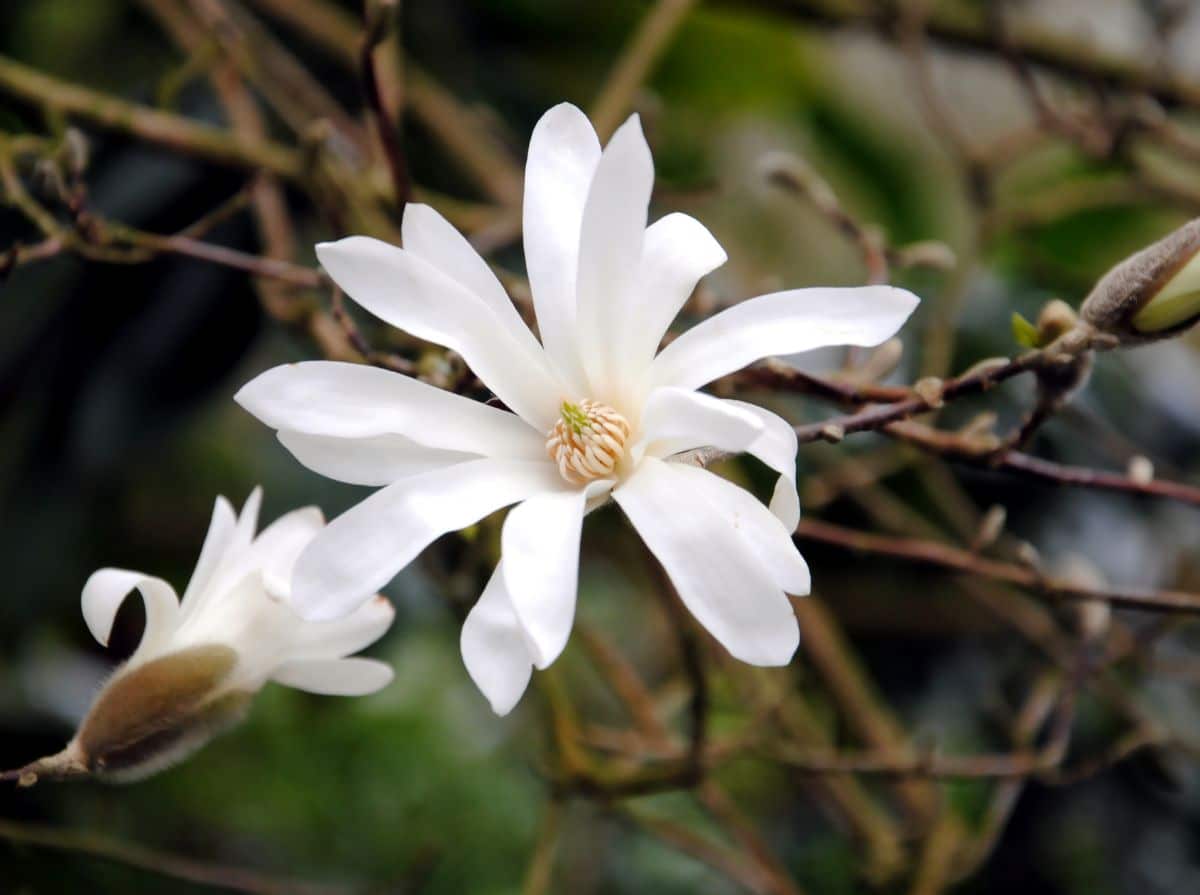
| Plant name: | Magnolias |
| Daytime lighting requirements: | Full sun to part shade |
| Watering requirements: | Moderate to high |
| Growing zone: | Zones 4 to 10, depending on the variety |
| Additional growing information: | If your magnolia tree is growing well, there is no need to add any additional fertilizer. |
While there are different magnolia varieties to choose from, the star magnolia is one of the top picks for planting in a moon garden. This stunning tree grows to about 15 to 20’ in height, with star-shaped white flowers that appear in spring. Flowers are preceded by fuzzy, pussy willow-like buds that later mature into pinkish-red seed pods.
Many moon garden plants are smaller specimen species, just right for inground planting in ornamental beds. But to really make your moon garden landscape come to life, adding a few vertical specimens like a magnolia is a sure way to add lots of drama. Even better, magnolia flowers have a sweet and delightful fragrance that you can’t help but adore.
13. Bleeding Hearts (Dicentra spp.)
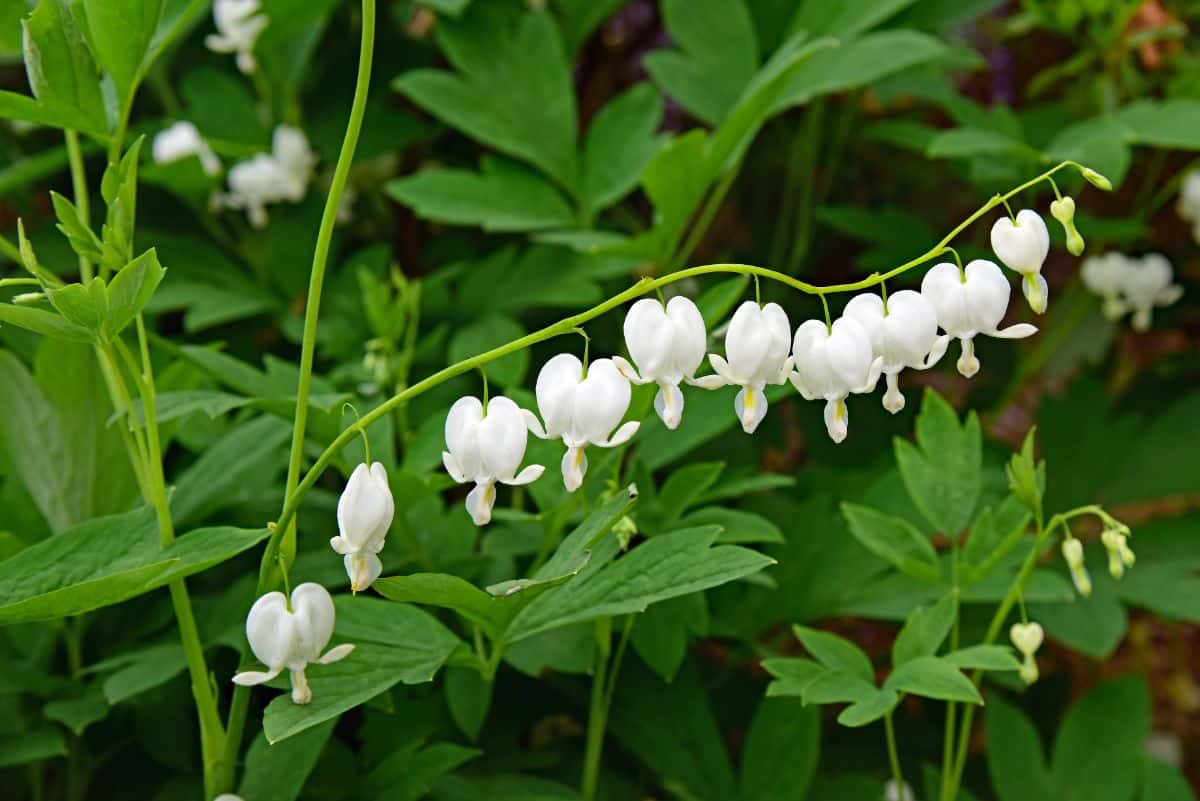
| Plant name: | Bleeding Hearts |
| Daytime lighting requirements: | Part shade |
| Watering requirements: | Moderate |
| Growing zone: | Zones 3 to 9 |
| Additional growing information: | Bleeding hearts work well in inground beds, containers, and hanging baskets too! |
For shadier garden locations, bleeding hearts are a popular pick. Able to adapt to full to part shade, bleeding hearts are usually purchased as rootstock or nursery plants, which should be planted in early spring after the danger of frost has passed. Delicate heart-shaped flowers bloom from mid-spring to early summer, and then the plant dies back during the summer heat and enters a state of dormancy.
While bleeding hearts are most commonly found with pink flowers, flowers also come in white. White bleeding hearts look particularly striking in moon gardens, where their fine flowers and airy and textured leaves will show to their fullest.
14. Peonies (Paeonia spp.)
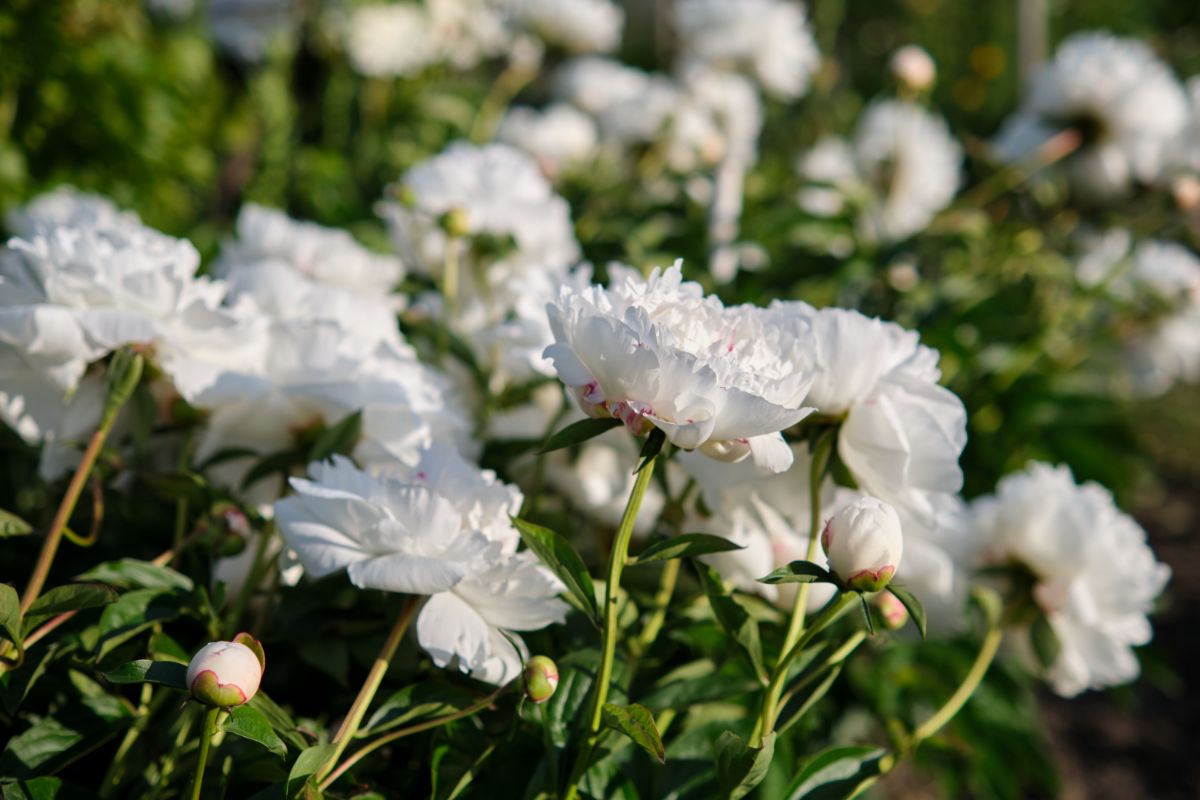
| Plant name: | Peonies |
| Daytime lighting requirements: | Full sun |
| Watering requirements: | Moderate |
| Growing zone: | Zones 3 to 10 |
| Additional growing information: | A common gardening myth is that peony flowers require ants to open. However, peony flowers can open on their own. |
Ever popular peonies come in several different colors, but for moon garden displays, opt for white peonies if you can find them. These fragrant flowers will add a delightful fragrance when you go strolling after dark in your garden, and they make wonderful cut flowers too.
Like creeping phlox, peonies can be prone to mildew issues, so be sure to provide them with adequate spacing. Staking up your peonies can also help them retain a more vertical growth habit too while trimming back foliage in autumn can prevent mildew issues from overwintering.
15. Creeping Phlox (Phlox stolonifera)
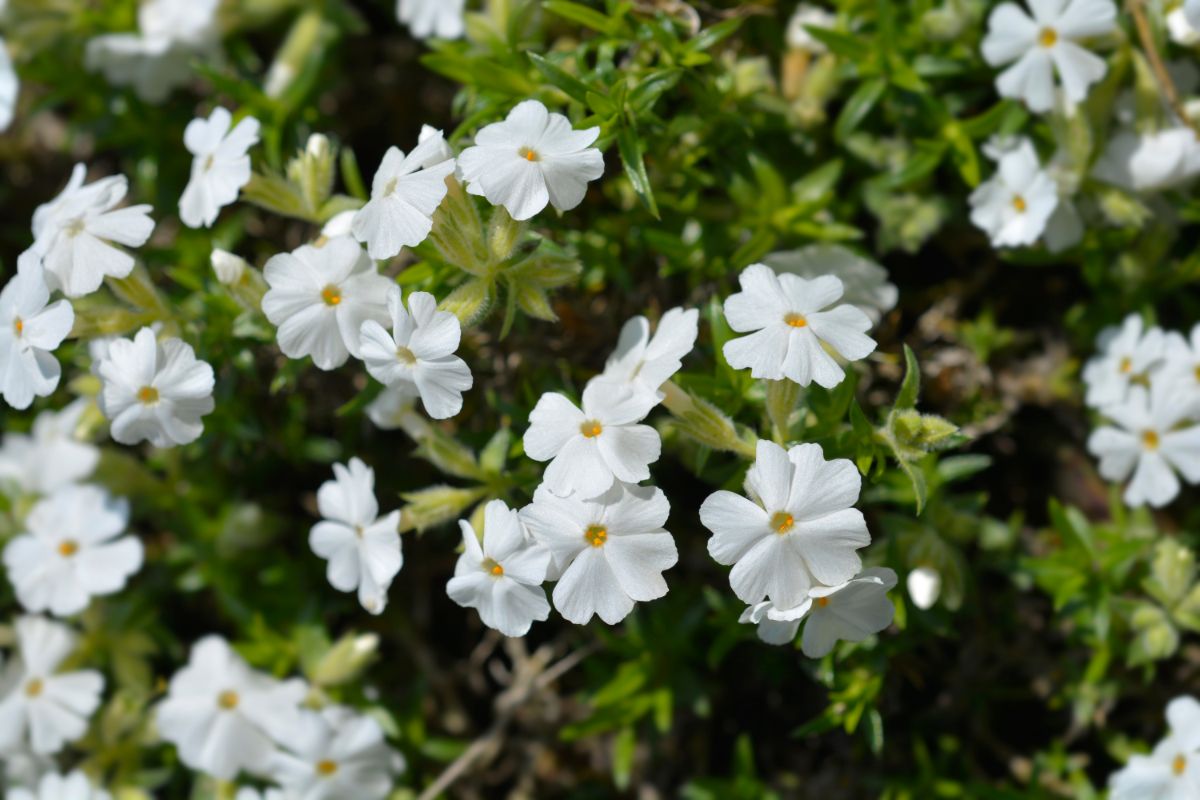
| Plant name: | Creeping Phlox |
| Daytime lighting requirements: | Full sun to part shade |
| Watering requirements: | Moderate |
| Growing zone: | Zones 3 to 9 |
| Additional growing information: | Creeping phlox blooms in April, which explains why April’s full moon is known as the “Pink Moon.” |
A low-growing ground cover, creeping phlox usually blooms in mid-spring, around April. Flowers come in a profusion of pinks and white, which grow so tightly together they make a colorful natural carpet across ornamental beds and in planters too. In the evening, these flowers will add brilliance to your backyard and are a must-have in any moon garden.
While creeping phlox is a spring-blooming plant, tall phlox is another popular garden plant. Tall phlox blooms emerge later in the season and are a hit with pollinators like bees and hummingbirds. Just be sure to provide your plants with adequate spacing, as phlox can be susceptible to mildew caused by inadequate airflow.
16. Mock Orange (Philadelphus virginalis)

| Plant name: | Mock Orange |
| Daytime lighting requirements: | Full sun |
| Watering requirements: | Moderate |
| Growing zone: | Zones 4 to 8 |
| Additional growing information: | Mock oranges are native to the eastern United States and are a popular specimen plant. |
While not a true orange, mock orange flowers emit a delicious citrus-like fragrance that will add a tropical feel to your garden after dark. This deciduous shrub grows to about 4 to 8’ in height and can adapt to cooler areas -- down to zone 4.
Although mock oranges are primarily kept for their flowers, blooms are short-lived. However, the plant’s deep green leaves can provide lots of privacy to your garden throughout the growing season too. For best results, add mulch to the base of your plant after planting to help the soil retain moisture better and to reduce your watering needs.
17. Hydrangea (Hydrangea petiolaris)
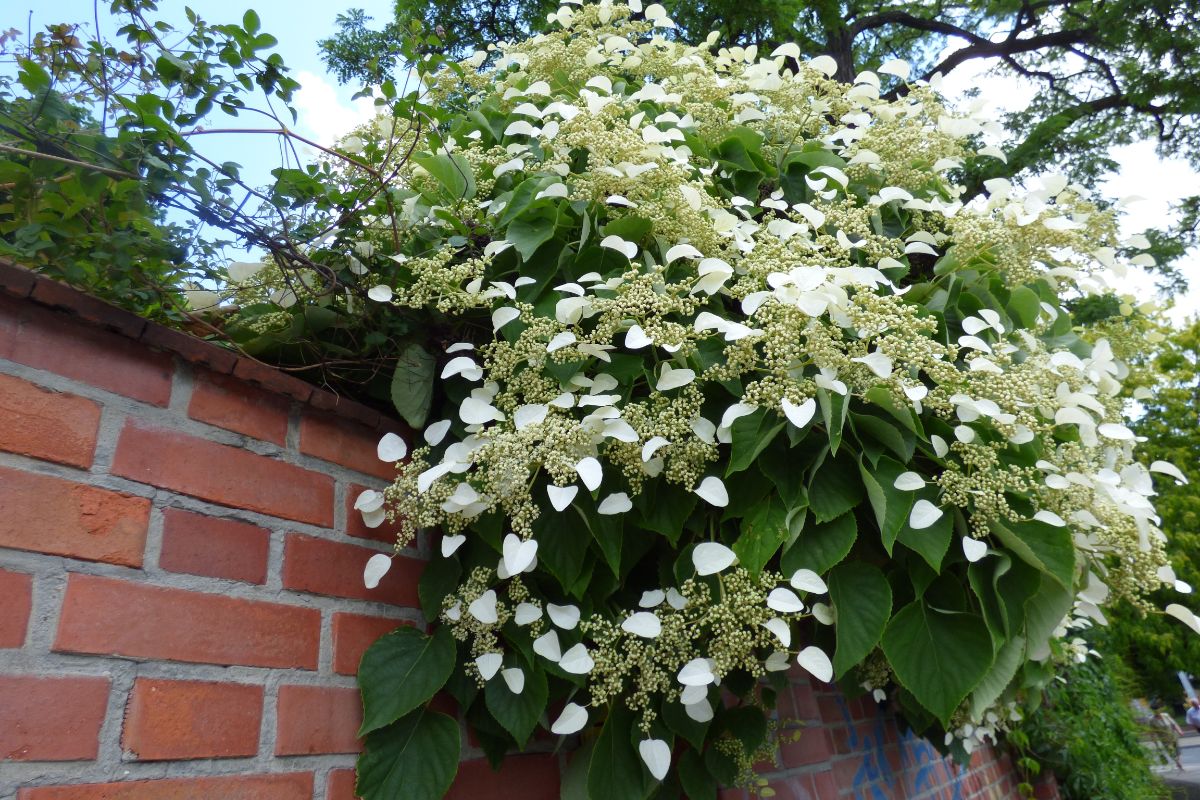
| Plant name: | Hydrangea |
| Daytime lighting requirements: | Full sun |
| Watering requirements: | Moderate |
| Growing zone: | Zones 3 to 7 |
| Additional growing information: | Unlike English ivy, climbing hydrangea roots will not damage masonry. |
Hydrangeas come in all shapes and sizes, including ‘French,’ ‘Smooth’ and ‘Oakleaf’ hydrangeas. But for lots of drama and evening color, try keeping climbing hydrangeas in your moon garden.
A low-maintenance plant, climbing hydrangeas’ blooms are bright white, making them ideal flowers for nighttime viewing. What’s more, unlike English ivy and many other climbing plants, climbing hydrangea roots won’t damage masonry, so you don’t need to worry about planting this plant against an outbuilding or privacy fence.
18. Hostas (Hosta spp.)

| Plant name: | Hostas |
| Daytime lighting requirements: | Part shade |
| Watering requirements: | Moderate |
| Growing zone: | Zones 3 to 9 |
| Additional growing information: | Although hostas are drought tolerant once established, they will grow best with more frequent watering. |
Hostas are a classic choice for many landscape designs, and moon gardens are no exception. While hostas often have rich green leaves, many species boast highly variegated green and white leaves, which will add lots of color to garden landscapes in the evening.
Depending on how much gardening space you’re working with, you can choose miniature hostas or larger specimens to act as ground covers. However, hostas are a favorite among slugs and snails so if you decide to plant them, consider adding a few slug pubs to your garden beds to keep your hostas looking their best.
19. Lamb’s Ear (Stachys byzantine)
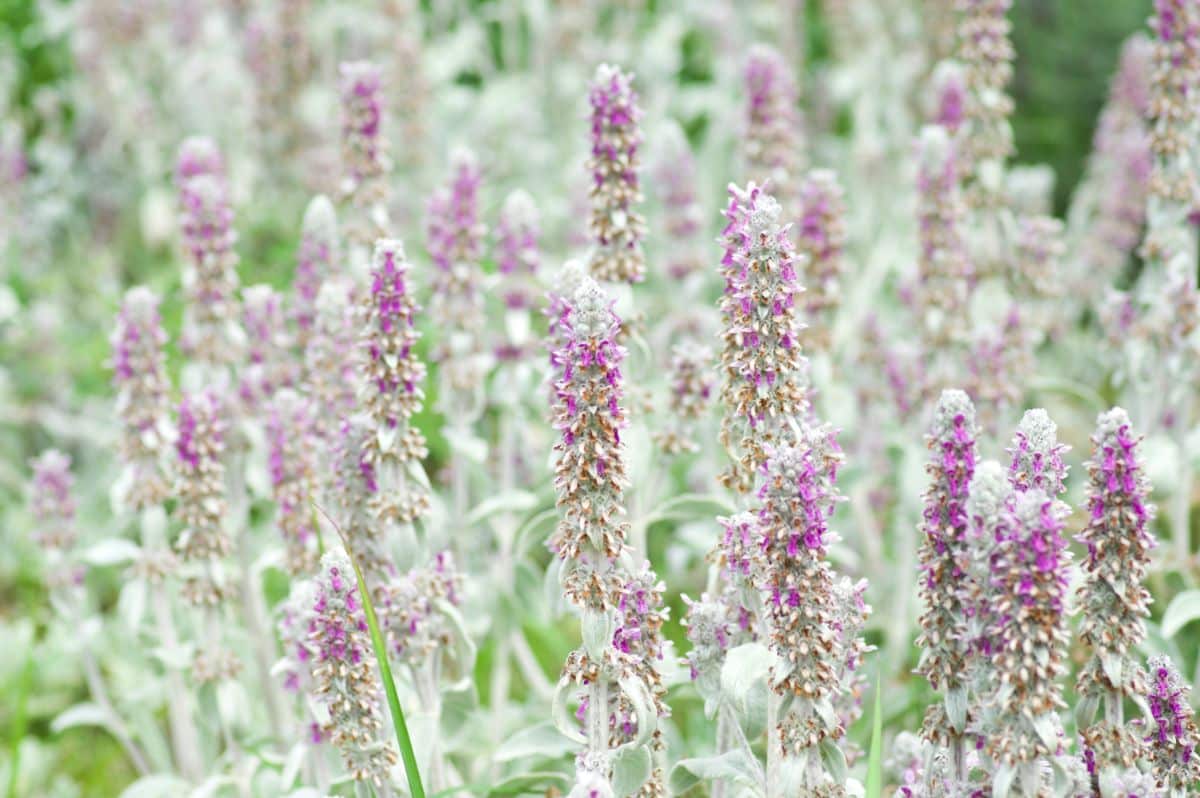
| Plant name: | Lamb’s Ear |
| Daytime lighting requirements: | Full sun to part shade |
| Watering requirements: | Low |
| Growing zone: | Zones 4 to 8 |
| Additional growing information: | Lamb’s ear has historically been used to make all-natural band-aids. |
Native to the Middle East, lamb’s ear is a member of the mint family and can spread very readily as a result. However, this easy-going plant grows quite low to the ground, making it a good choice for a ground cover. Lamb’s ear looks particularly nice when planted among taller flowers, like white bleeding hearts and mock oranges.
Lamb’s ear is often very popular with young gardeners thanks to its soft and furry leaves. Those leaves are silvery in tone, meaning they’ll show well in the moonlight; however, the plant also provides a sweet pop of color during the day when its small, pinkish-purple flowers bloom. Intriguingly, lamb’s ear leaves are edible and have been used historically for bandage making too.
20. Foamflower (Tiarella cordifolia)
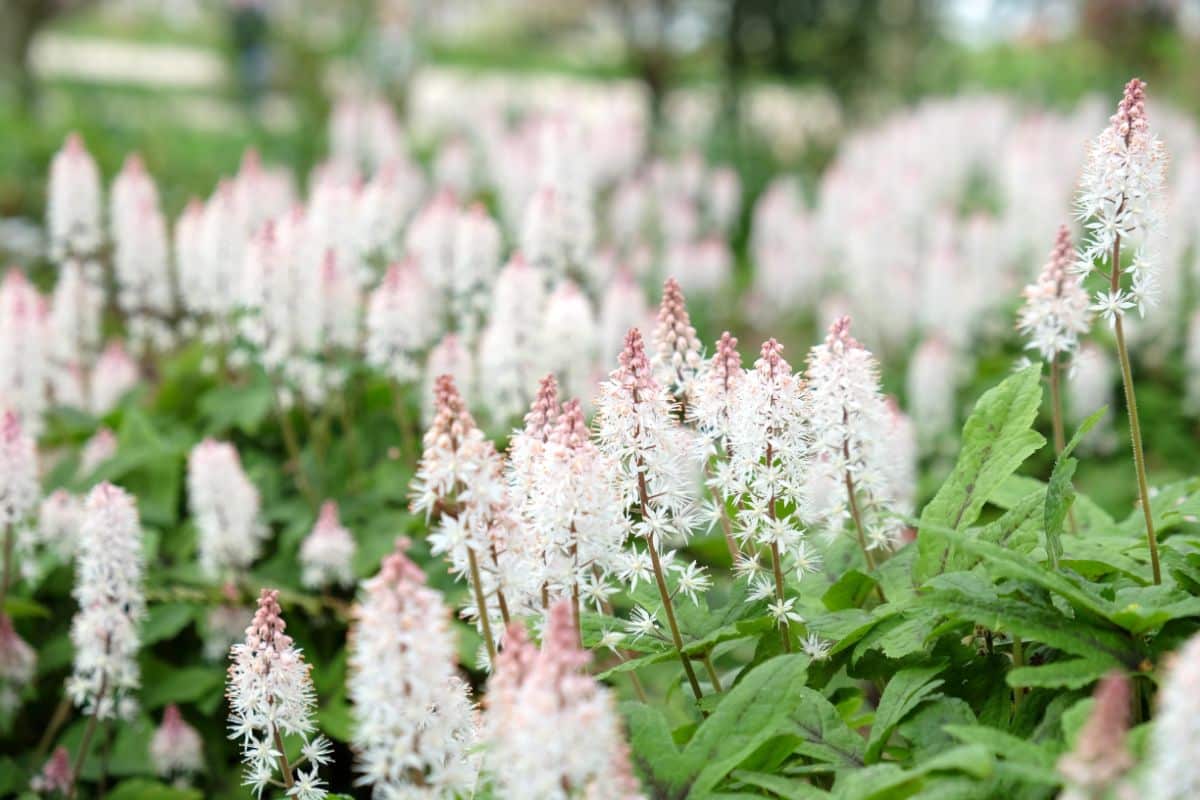
| Plant name: | Foamflower |
| Daytime lighting requirements: | Part sun to full shade |
| Watering requirements: | Moderate |
| Growing zone: | Zones 4 to 9 |
| Additional growing information: | Foamflowers are naturally resistant to most pests and diseases. |
Generally disease-resistant, deer and rabbits also tend to avoid foamflowers, so they’re a good pick if your garden has lots of visiting critters. Foamflowers are also shade-loving plants, making them perfect for backyards that don’t receive much sun.
Named for their airy sprays of pink or white “foamy” flowers, foamflowers grow low to the ground and make an exceptional ground cover for moon garden beds. Plants spread quickly via underground runners, and frequent deadheading can keep your flowers looking their best throughout the growing season.
Frequently asked questions
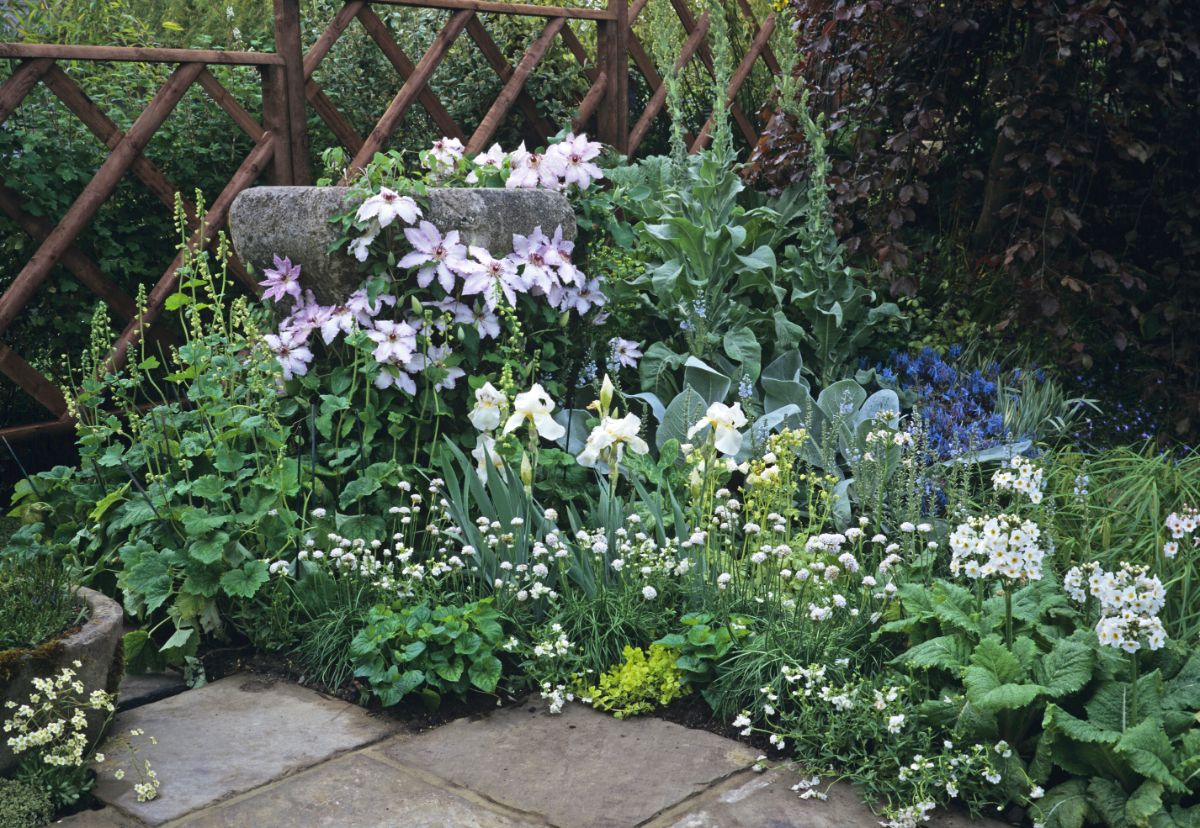
The best plants for moon gardens are night-blooming species and plants with highly contrasting white, silver, or light green foliage or flowers. Some ideal choices include moonflowers, night-blooming jasmine, and white peonies.
Moonflowers are symbolic of the moon and are perfect for your own moon garden. These delightful, trumpet-shaped flowers begin to bloom in the evening, with bright white flowers that reflect the moon’s light beautifully.
The flowers of night-blooming jasmine, evening primrose, and moonflowers begin to unfurl in the evening. This makes them especially well-suited for moon gardens and also explains why they are a favorite treat among nighttime pollinators like hawkmoths.
Summary
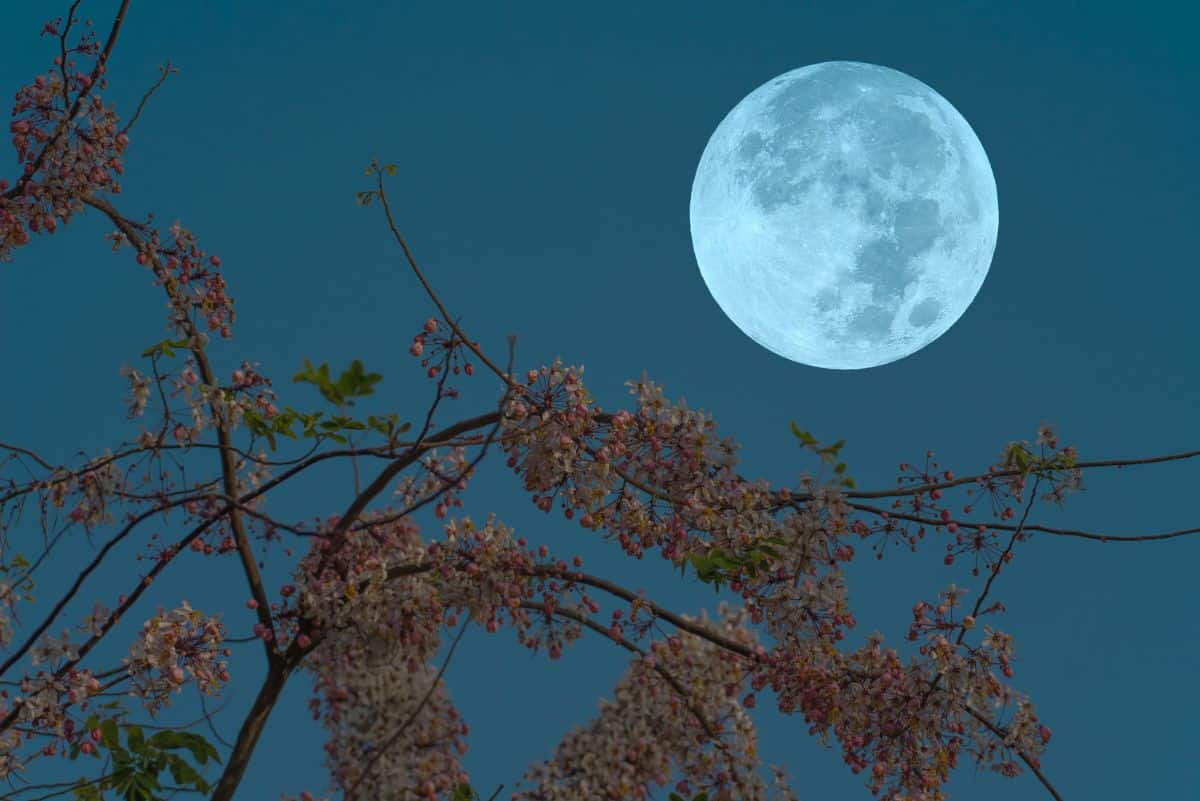
Moon gardens are magical places that come alive when the rest of the world begins to settle down for the evening. Packed with bright white blooms, silvery foliage, and fragrant flowers, there’s something ethereal about these unique garden spaces. If you’re looking for a creative way to liven up your landscape, moon gardens are a fun and easy way to do it.
We hope you’ve enjoyed this article on the best plants to grow in your own moon garden. But if you’re looking for more plant suggestions that will capture the moonlight beautifully, check out our article on other stunning white flowers to try.

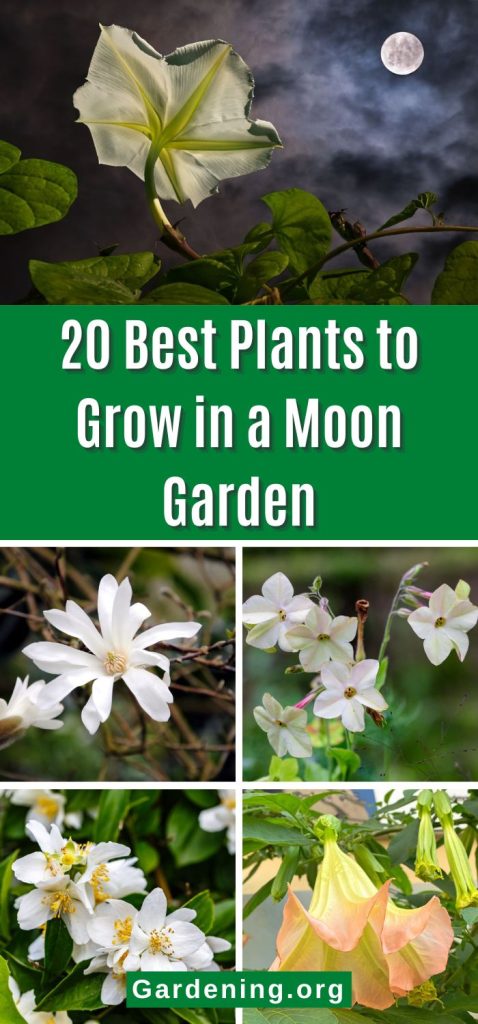
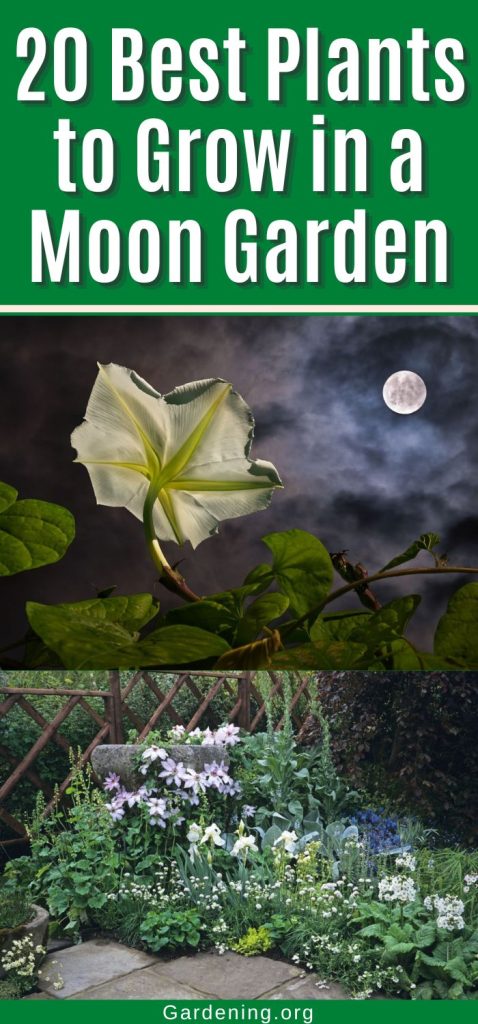

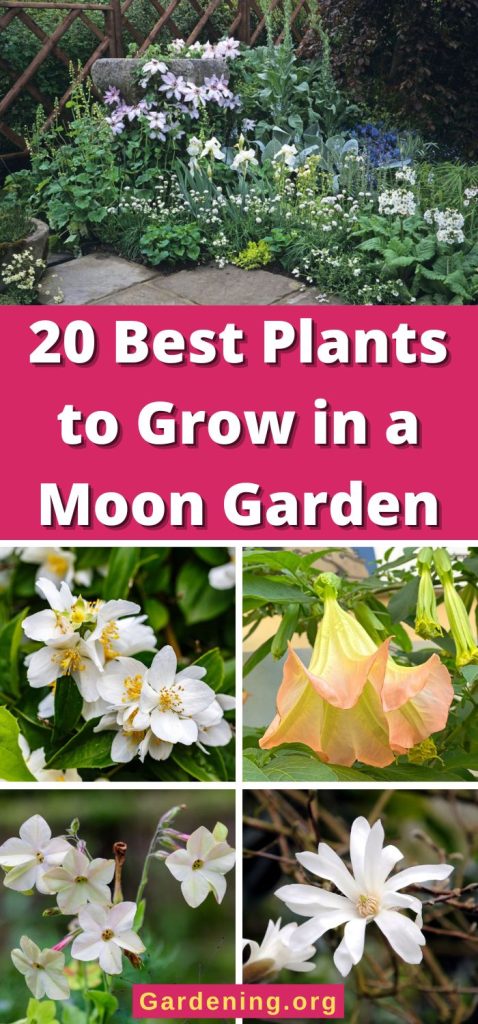
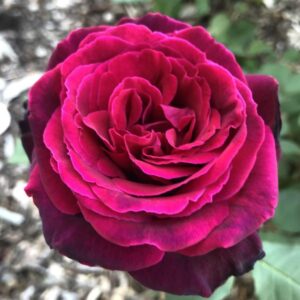
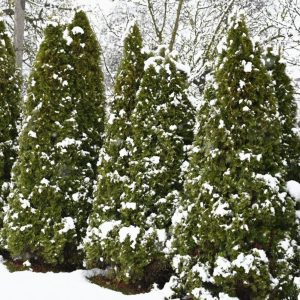


Lori
I'm a brand new flower, or any type of gardener. Loved this article! Made me want to rush out & buy every single flower suggested! Thank you!
Mary Ward
Thanks! Doesn't it just make you want to run out and start planting?
AmyD
Another night blooming fragrant flower is Midnight Candy (Zaluzianskia capensis). It is white also and well worth looking into.
RosinaBloom on Dave's Garden
Fabulous garden inspirations that I enjoyed just browsing through... Thank you!